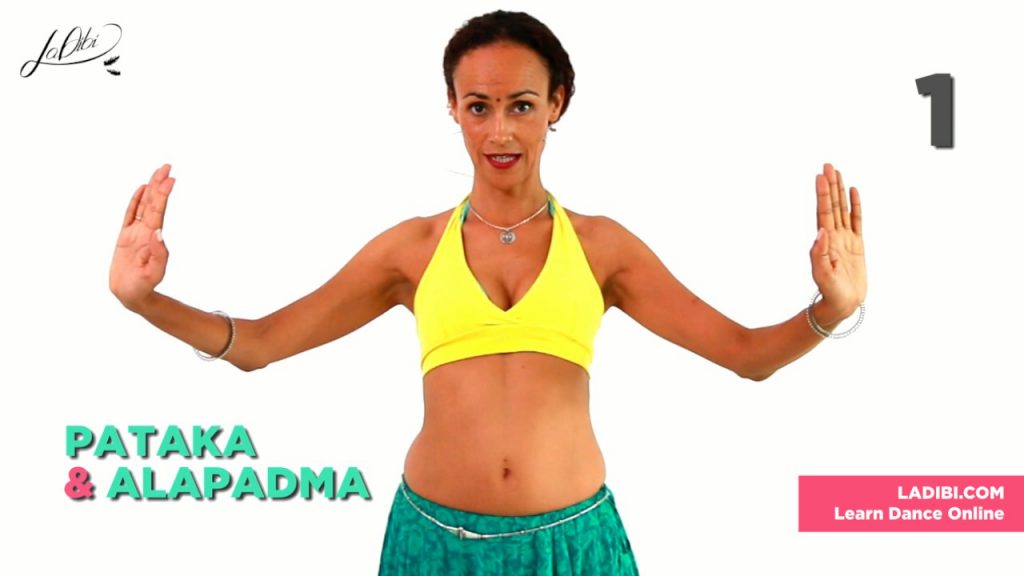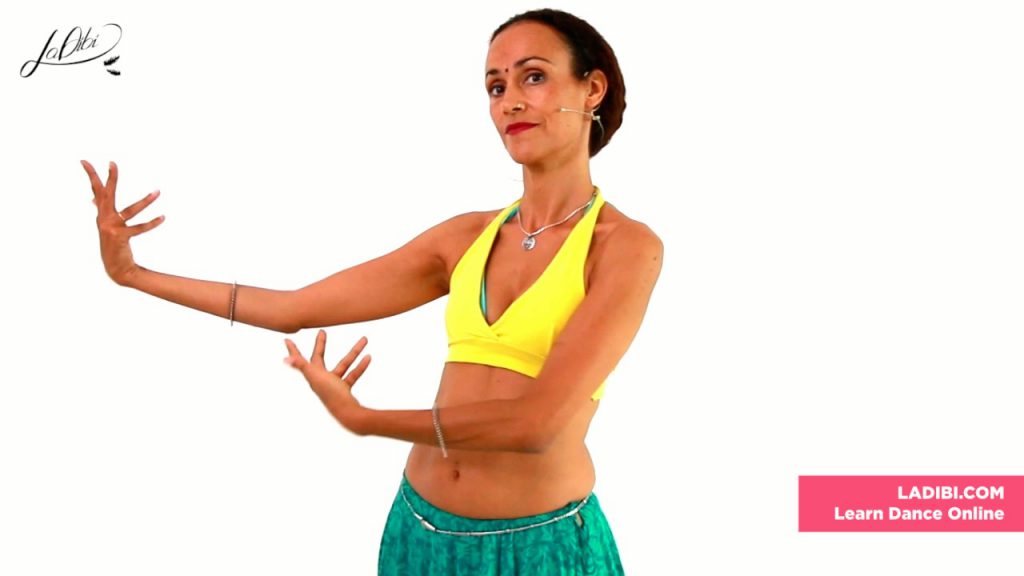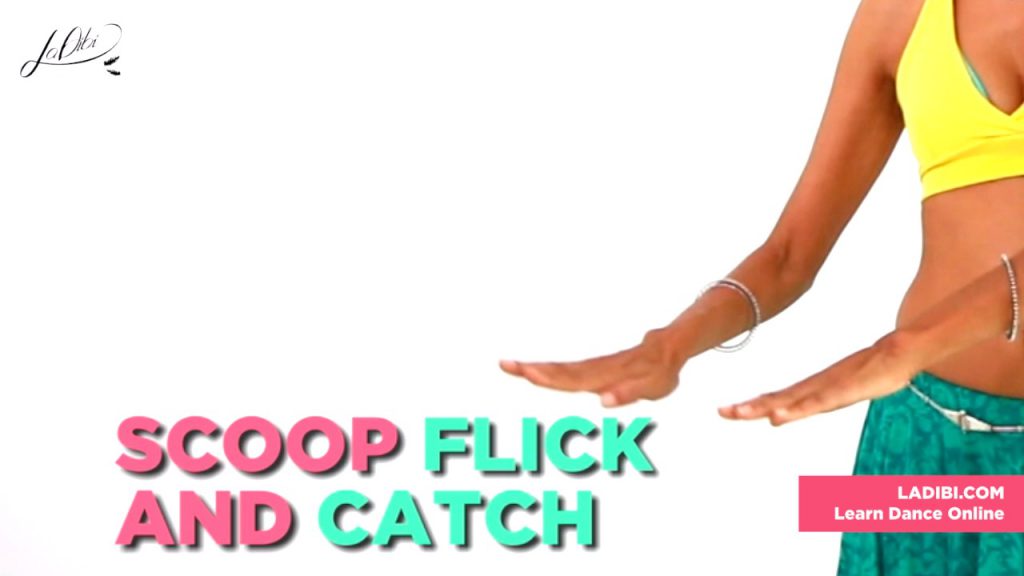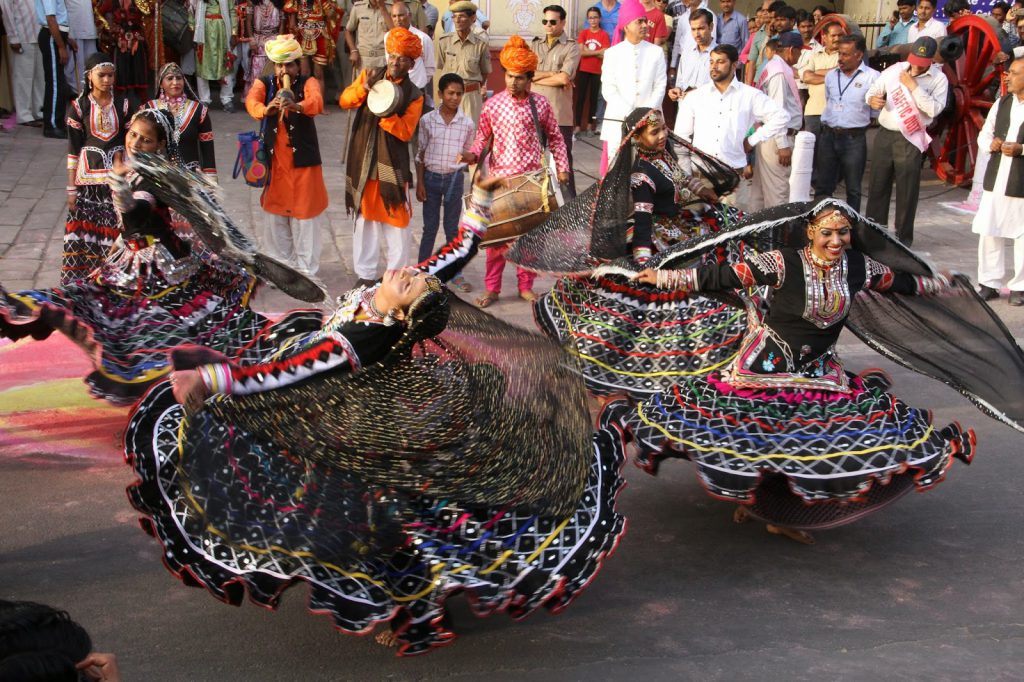This tutorial shows you 2 of the most common hand gestures in Rajasthani dance. You will meet some mudras and learn how to use them folk style!
In our blog post https://ladibi.com/magazine/dance-through-history/rajasthani-dance/ we talk about the “cultural body” – these movements are typical of the Rajasthani cultural body.
LIST OF MOVEMENT FROM THE EPISODE
Pataka Alapadma
You will see this simple, pretty hand movement very often in Rajasthani dance. It is a rhythmic movement that comes from the elbow rather than using the whole arm. Unless you are doing it above your head of course!
Pataka Mudra

Pataka Mudra is a very common gesture used in all styles of Indian dance, and here you can see it used in folk dance too. Mudras have many meanings in classical dance, depending on how they are used and whether the dance is telling a story or not. Generally speaking it means “flag” but it can represent all sorts of things, like a sword, clouds, to stop, denoting time… and many more!
All the fingers and the thumb pressed together like a tight high five. Remember to bend the wrist. Use a strong dorsal flexion!
Alapadma Mudra

Alapadma Mudra is also used in all styles of Indian dance, and it represents the lotus flower in full bloom. You can imagine a beautiful flower, with your extended fingers as the petals.
Pulling the little finger towards the wrist, allow all the fingers to separate and extend away from each other. Try to keep an equal distance between all the fingers. Again, remember to break your wrists.
Swap from mudra to mudra on the beat of the music. When you do Pataka Mudra, your palms are facing away from you. When you do Alapadma Mudra, your palms are facing towards you.
“And” is the transition.
You can do this movement all around the body; on the left, on the right, one hand either side of the body, both hands in front, above the head, one hand above the head and one arm extended to the side… Basically anywhere! Experiment and see what works for you and the music.
Scoop Flick Catch

This is a 3-part movement that is very traditional. There is a beautiful folk dance, traditionally from the Rajput caste, called “Ghoomar” that is usually done during the festival of Gauri Puja – the festival of the Divine Mother.. There are many different versions of the traditional song, which is also called Ghoomar. It talks about daily life: the jewelry that they like to wear, clothing, making food, wishing for a good husband with a big turban!
The word Ghoomar means to turn or to spin, so the dance is full of exciting spins along with movements depicting the lyrics of the song. The women dress up in their most beautiful clothes and gather together to celebrate, with their colourful skirts flying and their jewelry sparkling!
Using Pataka Mudra with your palms facing down towards the floor, make a scooping motion as if you are scraping something from the floor with your fingertips first.
On the next beat, flip your Pataka over so your palms are facing up.
On the next beat, make a fist, or Mushti Mudra as if you are catching a fly in your hand.
The 4th beat is used for the transition, to change sides, or you can pause briefly before doing the whole movement again.
Again, you can improvise with this movement. You can do it with your hands either side of your body, or in front of the body.. You can do it with both hands on the same side of the body, and alternate sides. You can change the level of the movement: moving upwards from hip height to shoulder height.
HAPPY ENDING XD
Rajasthani dance is joyful, energetic and open to interpretation! There are no rules as such in folk dance, so you can improvise and play with these movements. These gestures do not depict or describe any gods, so you can feel comfortable knowing that you can use them without disrespecting the culture you are drawing inspiration from.
Indian style costuming is so much fun. From gypsy style to maharani, there is so much to choose from! Remember that culturally speaking, Indian women tend to dress in a more modest fashion.
The shoulders are usually covered – think Choli top.

A long, full skirt with leggings or pantaloons underneath so there are no immodest surprises when they are spinning.
A “dupatta” – a long, usually embellished veil that can be worn over the left shoulder and artfully draped across the body, or on the head.
Kalbeliya costumes are very striking and easy to recognise. A very wide spinning skirt which is usually black to represent the snake, heavily decorated with bold, colourful applique, silver trim and mirrors. The top is a long choli made from the same embellished fabric, and it is long sleeved and also covers the belly. They often wear a dupatta on their head, and use it to enhance their movements.
Kalbeliya dancers also wear fantastic accessories! They love brightly beaded jewelry and often wear necklaces, earrings, headdresses and belts that they have beaded themselves. They also wear long, colourful strings of pom poms hanging from their wrists and elbows. These dangling decorations swing around and accentuate all their hand and arm gestures, like the gestures you just learnt!

I hope you enjoyed these Rajasthani hand gestures, and maybe they have made you curious to explore Rajasthani culture a little more. It’s important to appreciate the culture that our dance comes from, so why not check our blog post https://ladibi.com/magazine/dance-through-history/rajasthani-dance/
Do you have any questions? We would love to hear from you!
